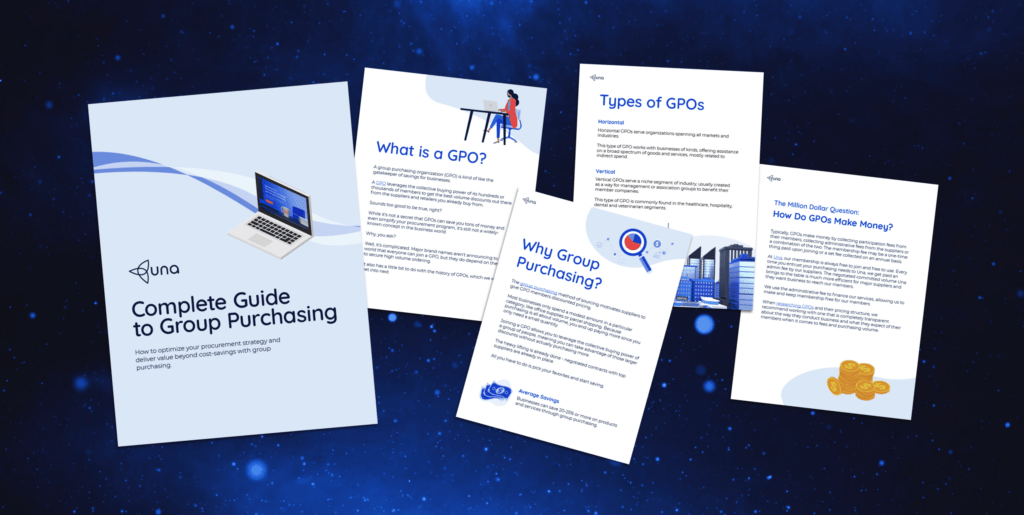
Pocurement professionals apply the term spend under management to measure and communicate their team’s impact on the organization at large. While the definition can vary, it's generally defined as the percentage spend that falls under procurement’s management.
Some organizations define SUM as any spending that leverages preferred supplier contracts.
Below, we outline how to bring more spend under management using six of the best practices.
Your procurement team’s sourcing strategy might favor a strategic, project-based, long-term contract, or one-off spot-purchase approach. It typically involves a competitive process and will be overseen by procurement leaders or a cross-functional category team.
A strategic sourcing strategy is key to ensuring vendors with the potential to deliver the most value. Suppliers that can ensure quality, reduce risk, provide great service and fair prices should be identified as preferred suppliers. In turn, they should be effectively and consistently managed.
Once onboarded, procurement teams must allocate substantial SRM activities to ensure these suppliers continue to deliver value. This includes performance monitoring, regular communication and collaboration, and timely contract reviews.
If a preferred supplier contract is automatically renewed at the end of a year, procurement cannot reasonably claim this as SUM. They won’t have given any consideration to changing circumstances, opportunities for re-negotiation, or alternate vendors.
To drive more SUM within your organization, you’ll also have to focus on encouraging buyers to choose the right vendors. How can you make it easier for them to find and spend with your preferred suppliers? Consider offering incentives, implementing better technology, or providing additional education and training.
Formal approval requests aren’t always necessary. Buyers are often authorized to make certain low-value purchases or claim expenses (e.g. for corporate travel).
When authorization is required, make sure buyers are getting it right. This provides an opportunity to identify and prevent maverick spending.
Proper purchase authorization refers to spending that complies with a company's purchase approval policies. The purchase is approved and an invoice arrives before an order is placed. This enables procurement teams to validate invoices and improves visibility across the organization.
Departmental expense and purchase history accounts can consist of hundreds, if not thousands, of detail items. A failure to accurately code transactions makes it difficult for procurement teams to manage their budgets. It also leads to confusion or inaccurate information surrounding how much is being spent where, and results in bad sourcing decisions.
Implementing a robust coding system will reduce human error and enable procurement to better analyze SUM. Ideally, buyers should be able to quickly access pre-existing information on suppliers, contracts, goods, and services. Being able to do so negates the need for them to manually enter this data.

The value unlocked through a preferred supplier program is heavily reduced if the original terms are not upheld by your buyers. You can easily end up spending more or losing out on additional favorable terms, like expedited shipping or volume discounts.
One way to minimize this risk is to require buyers to reference the relevant contractual terms when a purchase is made. To improve compliance, procurement must ensure contracts are documented well, up to date, and easily accessible.
How easily are buyers able to apply the correct procurement processes? Clunky and confusing manual processes frustrate buyers. They also add significant indirect costs to the business as a result of time wasted. For this reason, efficiency must not be ignored when it comes to defining or calculating SUM.
Procurement teams should identify where and how their processes can be better streamlined. This could be accomplished through employee education, contract management, supplier engagement, sourcing strategy, catalog management, or technology implementation. Another viable option? Partnering with a group purchasing organization (GPO).
The more effective the systems in place, the more scope procurement professionals have to SUM across the organization.
For organizations to properly bring more spend under management, purchases must be visible during two different time periods:
Long-term historical data is especially beneficial when it comes to performing accurate spend analyses. The more details of each transaction that are included, the better. Without an eProcurement system, it becomes very difficult to manage the sheer volume of data.
Need help gaining visibility into your organization’s spend? Una can help. Contact us for a free cost analysis today.


